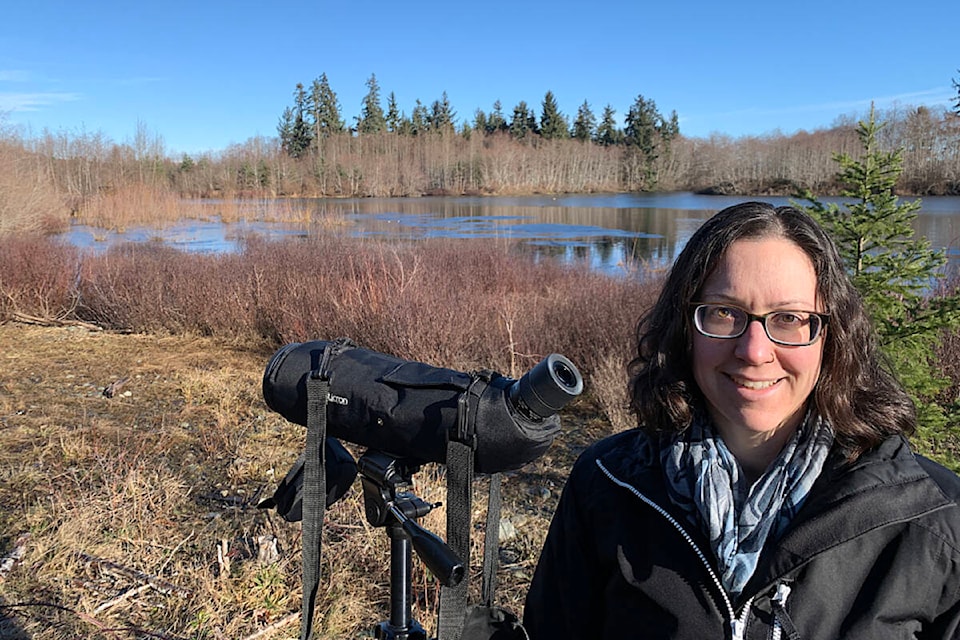It’s been about seven years since the final phase of the Baikie Island Nature Reserve was completed.
The project looked to restore the environment around the Campbell River estuary to something resembling what would have been there before its days as an industrial site.
The area was purchased back in 2000 by the Nature Conservancy of Canada and transferred to the city a year later under a covenant that the city would protect and manage the property as a nature reserve. The area, after all, serves as an important ecosystem for salmon, waterfowl, migratory birds and other native species integral to the well-being of our natural environment.
And after hundreds of thousands of dollars invested and who knows how many volunteer hours spent working on the project, much of the site is now a thriving natural environment enjoyed by the public every day. The birds are back and singing, the fish are back in huge numbers and the trees and other native vegitation being replanted by groups like Greenways Land Trust through various initiatives are actually taking root and thriving now that the contaminated soil has been removed and replaced.
But there are still large swaths of land within the reserve area that haven’t been adequately addressed, according to Greenways executive director Cynthia Bendickson. While the group has done what they can with the money and volunteer time that’s been available, there are some areas that simply can’t be restored without another large-scale operation to remove the heavily-compacted soil contaminated by years of oil spilling from machines and other pollutants.
Heading right as you leave the parking lot and heading down the south side of the river – instead of heading left over the bridge onto Baikie Island itself, where the majority of the restoration work was done – various interpretive educational kiosks dot the path educating those who visit about the area’s past and the work that’s been done. But Bendickson says while some effort was put towards restoring this area, it wasn’t given the same attention as Baikie Island itself.
RELATED: Final phase of Baikie Island restoration project complete
RELATED: Explore Campbell River’s Baikie Island Nature Reserve
“There was only so much money,” she says. “And we’re very thankful to the city for what they managed to do and the support they’ve shown to us over the years, but without another huge grant of some kind, from someone, this area will probably never get any better. There are some nice meadowy kinds of areas starting to come in, but it’s been really, really hard to get things established.
“We’ve tried the ‘quick and dirty’ method of getting school groups and volunteers in and planting it and putting some nice soil around the trees to get them going and putting some mulch down and it’s just not enough,” she continues. “Nothing will grow here. We’re getting to the point where even the alders are dying. You know when alders start dying that it’s bad. What we need to do over here is what was done over on Baikie Island itself.”
It’s a major undertaking. And it’s going to be very, very expensive.
“Our last few grant applications have been for almost a million dollars,” she says. “This is a significant scale of work. We need to get big machines on site, and those are expensive, we need to dump the soil somewhere once we take it out, we have to contaminated sites testing and archaeological work. It’s another huge job. It’s impossible to turn back the clock entirely, but there’s an opportunity here to create something really special by continuing this work.”
Greenways has been applying for various grant opportunities that have arisen over the past few years, many backed by city council with letters of support.
“We haven’t been successful yet,” Bendickson says, “but there was another fund announced in March called the B.C. Salmon Restoration and Innovation Fund, which is kind of cool, because it’s a joint fund between the province and the federal government, which I haven’t seen them do very much, at least in terms of environmental initiatives. So we’ve put in for that one, too, which we’re waiting to hear about.”
But without a significant sum, they just can’t do what needs to be done.
“We’ve decided, at this point, that all we can do is keep the invasives down at this site as much as we can, but we’re not going to do much else with it. It’s super disheartening to the volunteers who keep coming down and planting trees just to see them all die.”
But Bendickson and the rest of the dedicated volunteers won’t be deterred by the fact that it’s a daunting task.
“There is always hope,” she says. “I mean, there are funds out there, and it feels like there’s an increasing recognition that this habitat restoration stuff is important. It’s just too bad that there’s so little of it to go around. At least we can point across the water and say, ‘See? It’s not a pipe dream,’” Bendickson says. “You can see what’s possible right over there. If you put enough time, effort and money into these things, you can actually make these places pretty awesome.”
miked@campbellrivermirror.com
Like us on Facebook and follow us on Twitter
